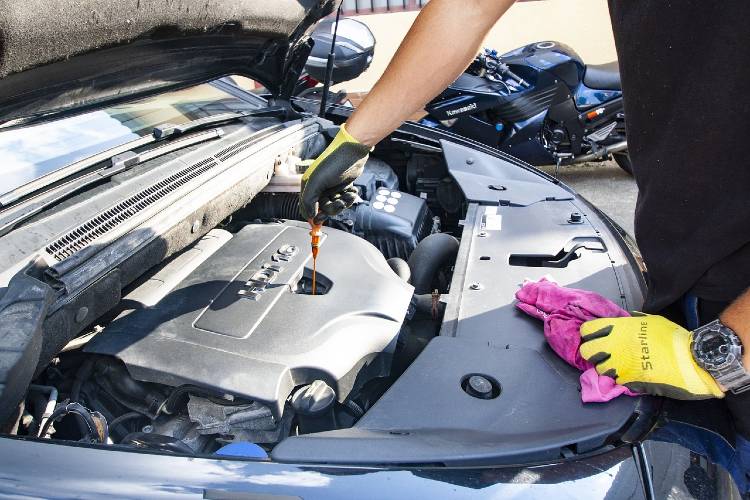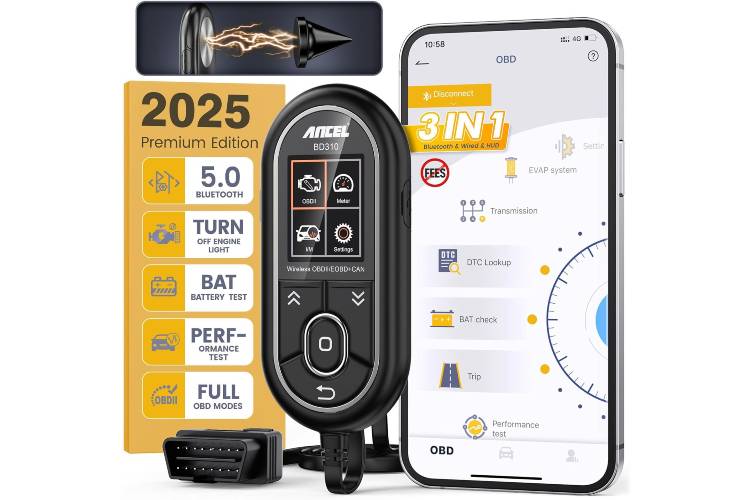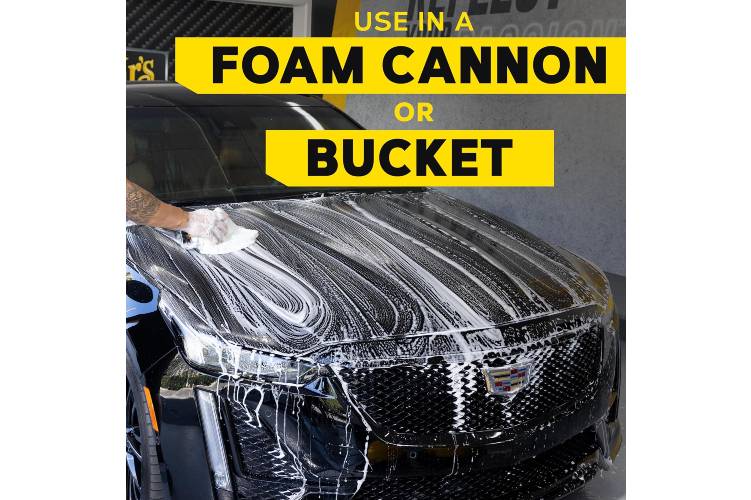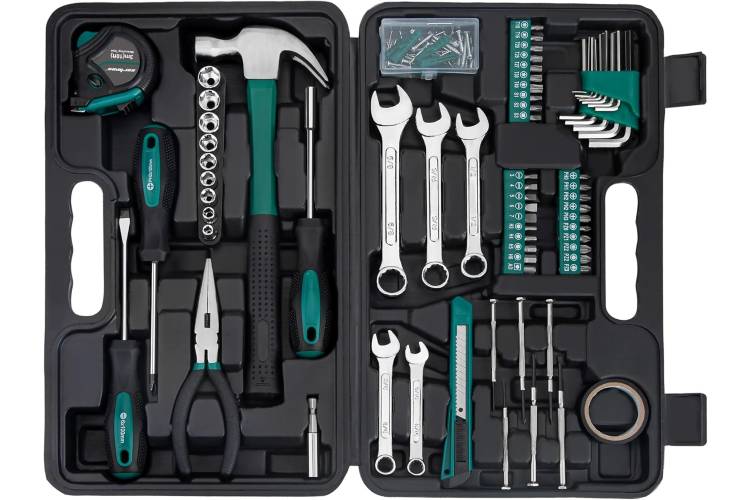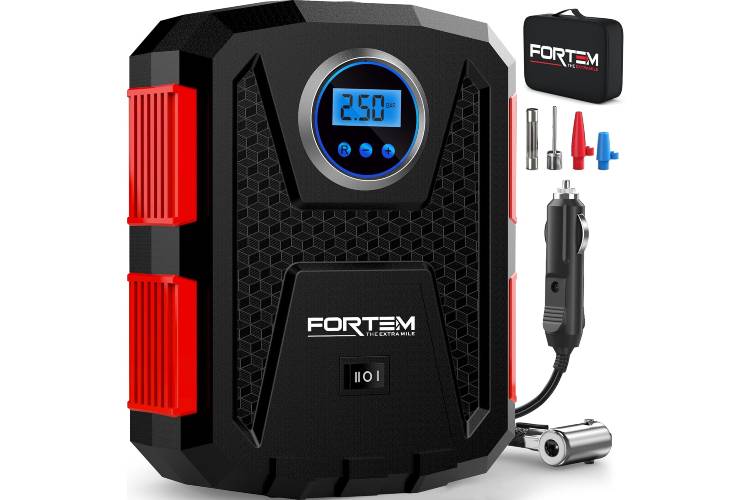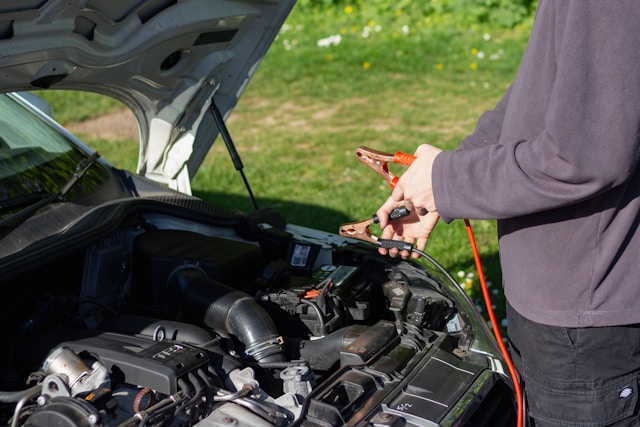As winter approaches, it's crucial to ensure our vehicles are ready to face the challenges of cold weather, icy roads, and snowy conditions. In this comprehensive guide, I'll walk you through the essential steps for preparing your car for winter, helping you stay safe and comfortable on the road during the chilly months ahead.
Understanding the Importance of Winter Car Preparation
When the temperature drops and snow starts to fall, our cars need extra attention to perform at their best. Preparing your vehicle for winter isn't just about comfort; it's a matter of safety for you, your passengers, and other road users. By taking the time to winterize your car, you'll reduce the risk of breakdowns, accidents, and costly repairs.
I've learned from experience that a well-prepared car can make all the difference when facing harsh winter conditions. From improved traction on icy roads to reliable starting in freezing temperatures, the benefits of winter car preparation are numerous and significant.
Moreover, proper winter preparation can extend the life of your vehicle by protecting it from the corrosive effects of road salt and the strain of cold starts. It's an investment in both your safety and your car's longevity.
Essential Winter Car Maintenance Checklist
To ensure your vehicle is winter-ready, I've compiled a comprehensive checklist of essential maintenance tasks:
- Check and replace fluids
- Engine oil
- Antifreeze/coolant
- Brake fluid
- Power steering fluid
- Windshield washer fluid (winter-grade)
- Inspect and replace if necessary
- Battery
- Belts and hoses
- Windshield wipers
- Lights (headlights, taillights, brake lights)
- Tires (consider switching to winter tires)
- Test and service
- Heating and defrosting system
- Brakes
- Exhaust system
- Prepare emergency kit
- Blanket
- Flashlight with extra batteries
- First-aid kit
- Snacks and water
- Ice scraper and snow brush
- Jumper cables
- Sand or kitty litter for traction
By following this checklist, you'll be well on your way to a winter-ready vehicle. Remember, it's always better to address potential issues before they become problems on a cold winter day.
Winterizing Your Vehicle's Exterior
Protecting your car's exterior is crucial for maintaining its condition throughout the winter months. Here are some steps I always take to winterize my vehicle's exterior:
- Wash and wax: Give your car a thorough wash and apply a good quality wax. This creates a protective barrier against salt, slush, and other winter contaminants.
- Treat rubber seals: Apply a silicone-based lubricant to door and window seals to prevent freezing and sticking.
- Check and replace windshield wipers: Ensure your wipers are in good condition and consider switching to winter-specific wiper blades for better performance in snow and ice.
- Inspect the undercarriage: Look for any signs of rust or damage and address them before winter sets in. Consider applying an undercoating for extra protection against salt and moisture.
- Clear drain holes: Make sure the drain holes in your car's body are clear of debris to prevent water accumulation and potential rust.
By taking these steps, you'll help protect your car's paint, prevent rust, and ensure better visibility during winter driving conditions.
Preparing Your Car's Interior for Cold Weather
A comfortable interior can make winter driving much more bearable. Here's how I prepare my car's interior for the cold months:
- Install all-weather floor mats: These will protect your car's carpet from snow, salt, and slush that you'll inevitably track in.
- Check the heating system: Ensure your car's heater and defroster are working properly. A malfunctioning heating system can be more than just uncomfortable; it can be dangerous if you can't defrost your windshield.
- Replace cabin air filter: A clean filter will help your heating system work more efficiently and improve air quality inside the car.
- Lubricate door locks: Use a silicone-based lubricant on door locks to prevent them from freezing.
- Prepare a winter survival kit: Keep essentials like blankets, warm clothing, non-perishable snacks, and a first-aid kit in your car.
- Install a remote starter: If your car doesn't have one, consider installing a remote starter. It allows you to warm up your car before getting in, making those cold mornings more bearable.
By taking these steps, you'll ensure a more comfortable and safe interior environment during winter drives.
Winter Tires: A Crucial Element for Safe Driving
One of the most important aspects of preparing your car for winter is ensuring proper traction. Winter tires play a crucial role in this regard. Here's why I always recommend switching to winter tires:
- Superior traction: Winter tires are designed with special tread patterns and rubber compounds that provide better grip on snow and ice.
- Improved braking: The enhanced traction of winter tires translates to shorter stopping distances on slippery roads.
- Better handling: Winter tires help maintain control in challenging conditions, reducing the risk of skidding or sliding.
- Temperature performance: Unlike all-season tires, winter tires are designed to perform well in temperatures below 7°C (45°F).
- Longevity of all-season tires: By using winter tires, you'll extend the life of your all-season tires by not subjecting them to harsh winter conditions.
When installing winter tires, remember to put them on all four wheels for balanced handling. Also, check tire pressure regularly, as it can fluctuate with temperature changes.
Battery Care and Maintenance in Cold Temperatures
Cold weather can be particularly hard on car batteries. To ensure your battery is ready for winter, follow these steps:
- Test the battery: Have your battery professionally tested, especially if it's more than three years old.
- Clean the terminals: Remove any corrosion from the battery terminals and cables using a wire brush.
- Check fluid levels: If your battery isn't sealed, check and top up the fluid levels if necessary.
- Consider a battery blanket: In extremely cold climates, a battery blanket can help keep your battery warm and improve its performance.
- Keep it charged: Short trips can prevent your battery from fully charging. If possible, take a longer drive occasionally to help maintain the charge.
Remember, a well-maintained battery is crucial for reliable starting in cold weather. If your battery is showing signs of weakness, it's better to replace it before winter sets in.
Fluid Checks and Replacements for Winter
Proper fluid management is essential for winter car preparation. Here's what I focus on:
- Engine oil: Consider switching to a winter-grade oil that's less likely to thicken in cold temperatures.
- Antifreeze/coolant: Ensure your coolant is at the proper concentration to prevent freezing. A 50/50 mix of antifreeze and water is typically recommended.
- Brake fluid: Check the level and condition of your brake fluid. If it's dark or cloudy, it may need to be replaced.
- Power steering fluid: Low temperatures can affect the viscosity of power steering fluid, so make sure it's at the proper level.
- Windshield washer fluid: Use a winter-grade washer fluid that won't freeze in low temperatures.
- Gas tank: Keep your gas tank at least half full to prevent fuel line freeze-up and add weight to your vehicle for better traction.
Regular fluid checks and timely replacements can prevent many winter-related car problems and ensure smooth operation in cold conditions.
Creating the Ultimate Winter Emergency Kit for Your Car
Being prepared for emergencies is crucial when driving in winter. Here's what I include in my winter emergency kit:
- Blankets and warm clothing: Include extra gloves, hats, and warm socks.
- Non-perishable snacks and water: Energy bars, nuts, and bottled water are good options.
- First-aid kit: Ensure it's well-stocked and includes any personal medications.
- Flashlight and extra batteries: A hand-crank flashlight is also a good option.
- Ice scraper and snow brush: Essential for clearing snow and ice from your car.
- Shovel: A compact, foldable shovel can help you dig out of snow.
- Jumper cables: In case your battery dies or you need to help another motorist.
- Traction aids: Sand, kitty litter, or traction mats can help you get unstuck.
- Flares or reflective triangles: To signal for help and make your car visible.
- Basic tool kit: Include screwdrivers, pliers, and an adjustable wrench.
- Phone charger: A fully charged phone is crucial in emergencies.
- Hand warmers: These can provide quick warmth in extreme cold.
Having these items on hand can make a big difference if you find yourself stranded or in an emergency situation during winter travel.
Preparing Your Car for Winter Storage
If you have a vehicle you won't be using during winter, proper storage is essential. Here's how I prepare a car for winter storage:
- Clean thoroughly: Wash and wax the exterior, and clean the interior to prevent stains and odors.
- Change the oil: Fresh oil prevents contaminants from settling in the engine during storage.
- Top up the gas tank: A full tank prevents moisture from accumulating inside.
- Add fuel stabilizer: This prevents the gas from deteriorating over time.
- Inflate tires: Properly inflated tires prevent flat spots from forming.
- Remove the battery: Store the battery in a warm, dry place and connect it to a trickle charger.
- Use a car cover: This protects the paint from dust and scratches.
- Block the exhaust pipe: Stuff a rag in the exhaust pipe to prevent pests from entering.
- Raise the car on jack stands: This takes pressure off the tires and suspension.
- Cancel insurance: If allowed in your area, consider suspending your car insurance to save money.
By following these steps, you'll ensure your stored vehicle remains in good condition and is ready to hit the road when spring arrives.
Winter Driving Tips and Techniques
Even with a well-prepared car, winter driving requires extra caution and skill. Here are some tips I always keep in mind:
- Slow down: Reduce your speed and increase following distances to account for reduced traction.
- Avoid sudden movements: Accelerate, brake, and steer smoothly to maintain control.
- Know your brakes: If you have anti-lock brakes (ABS), apply steady pressure. For non-ABS, pump the brakes gently.
- Steer into a skid: If your rear wheels skid, turn the steering wheel in the direction you want to go.
- Don't use cruise control: It can cause your car to accelerate on slippery surfaces.
- Be extra cautious on bridges and overpasses: These freeze before regular roads.
- Keep your lights on: This improves your visibility to other drivers.
- Clear all snow and ice from your car: Don't drive with a "snow mohawk" on your roof.
- Plan your route: Check weather and road conditions before setting out.
- Stay with your vehicle: If you get stranded, it's safer to stay with your car and wait for help.
Remember, the best winter driving technique is to avoid unnecessary trips when conditions are severe. If you must drive, these tips can help you stay safe on winter roads.
Professional Services vs. DIY: Choosing the Right Approach
When it comes to preparing your car for winter, you have the option of doing it yourself or seeking professional help. Here's how I approach this decision:
DIY Approach:
- Pros:
- Cost-effective
- Builds personal knowledge about your vehicle
- Can be done on your own schedule
- Cons:
- Requires time and effort
- May lack specialized tools
- Risk of overlooking issues if inexperienced
Professional Services:
- Pros:
- Expertise and specialized equipment
- Comprehensive inspections
- Time-saving
- Cons:
- More expensive
- May need to schedule in advance
- Less hands-on involvement
I typically handle simpler tasks like fluid checks and tire pressure myself, but leave more complex jobs like battery testing or brake inspections to professionals. The key is to honestly assess your skills and the complexity of the task at hand.
Planning for Winter Road Trips: Extra Precautions
Winter road trips require additional planning and precautions. Here's how I prepare for longer winter journeys:
- Check weather forecasts: Monitor conditions along your entire route and be prepared to delay or cancel if severe weather is expected.
- Plan your route carefully: Stick to major highways when possible, as they're more likely to be plowed and salted.
- Inform others of your plans: Let someone know your route and expected arrival time.
- Fully charge your phone: Consider bringing a portable charger as well.
- Pack extra supplies: Include more food, water, and warm clothing than you think you'll need.
- Check your spare tire: Ensure it's properly inflated and you have the tools to change it.
- Consider snow chains: If you're heading to mountainous areas, snow chains might be necessary.
- Plan for frequent breaks: Fatigue sets in quicker when driving in stressful winter conditions.
- Have a backup plan: Know where you can stop if conditions worsen.
- Keep your gas tank full: Try not to let it drop below half-full to avoid fuel line freeze-up.
By taking these extra precautions, you'll be better prepared for unexpected situations during your winter road trip.
Technology and Gadgets to Enhance Winter Car Preparedness
Modern technology offers various tools to improve winter driving safety and convenience. Here are some gadgets I find particularly useful:
- Remote car starter: Warm up your car before you get in.
- Bluetooth-enabled jump starter: Jump-start your car without needing another vehicle.
- Tire pressure monitoring system: Keeps track of your tire pressure, which fluctuates with temperature changes.
- Heated windshield wipers: Prevent ice buildup on your wipers.
- Car GPS with real-time traffic updates: Helps you avoid accidents and road closures.
- Dash cam: Useful for insurance purposes in case of accidents.
- Portable air compressor: Allows you to inflate tires on the go.
- Battery maintainer: Keeps your battery charged during long periods of inactivity.
- LED emergency beacon: More visible than traditional flares in snowy conditions.
- Wi-Fi hotspot: Useful for checking weather updates or calling for help in areas with poor cell reception.
While not all of these are necessary, they can add an extra layer of safety and convenience to your winter driving experience.
Common Winter Car Problems and How to Avoid Them
Winter can bring specific challenges for our vehicles. Here are some common problems I've encountered and how to prevent them:
- Dead battery:
- Prevention: Regular battery checks, use of a battery blanket in extreme cold.
- Frozen doors and locks:
- Prevention: Apply silicone spray to weatherstripping, use a lock de-icer.
- Thick, sluggish oil:
- Prevention: Switch to a winter-grade, low-viscosity oil.
- Frozen windshield washer fluid:
- Prevention: Use winter-grade washer fluid with antifreeze properties.
- Reduced tire pressure:
- Prevention: Check tire pressure regularly, especially when temperature drops significantly.
- Frozen fuel lines:
- Prevention: Keep gas tank at least half full, consider using fuel-line antifreeze.
- Wiper blade damage:
- Prevention: Lift wipers off the windshield when parked, use winter-specific wiper blades.
- Radiator freezing:
- Prevention: Ensure proper antifreeze concentration in coolant.
- Salt corrosion:
- Prevention: Regular car washes, including undercarriage, application of anti-rust spray.
- Reduced visibility:
- Prevention: Replace worn wiper blades, keep all lights clean and functional.
By being aware of these common issues and taking preventive measures, you can avoid many winter-related car problems.
Conclusion: Staying Safe and Comfortable on Winter Roads
Preparing your car for winter is an essential task that ensures your safety, comfort, and the longevity of your vehicle. By following the steps outlined in this guide, you'll be well-equipped to handle whatever winter throws your way.
Remember, winter car preparation isn't a one-time task. Regular checks and maintenance throughout the season are crucial. Always prioritize safety over convenience, and don't hesitate to postpone trips if weather conditions are severe.
Ready to winterize your car but feeling overwhelmed? Why not schedule a winter preparation service with your local auto shop? Their expertise can ensure your vehicle is thoroughly prepared for the cold months ahead. Don't wait until the first snowfall – book your appointment today and drive with confidence this winter!
With proper preparation and cautious driving, you can navigate winter roads safely and comfortably. Stay warm, stay safe, and enjoy the beauty of the winter season from the comfort of your well-prepared vehicle.


